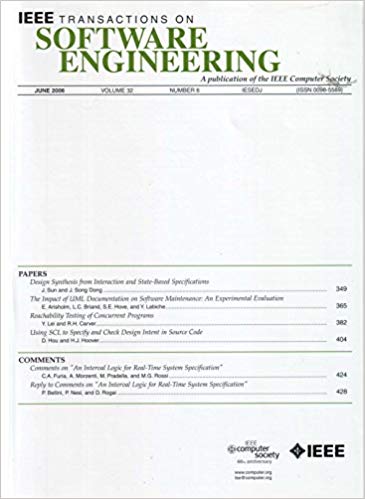基于llm的基于用例的COSMIC功能大小测量自动化
IF 5.6
1区 计算机科学
Q1 COMPUTER SCIENCE, SOFTWARE ENGINEERING
引用次数: 0
摘要
COmmon Software Measurement International Consortium (COSMIC)功能大小度量是一种在软件工业中广泛使用的方法,用于量化用户功能和度量软件大小,这对于估计开发工作量、成本和资源分配是至关重要的。COSMIC测量是一项手动任务,需要合格的专业人员和努力。为了支持COSMIC测量中的专业人员,我们提出了一种自动方法,CosMet,它利用大型语言模型从用自然语言指定的用例开始测量软件大小。为了评估所提出的方法,我们开发了一个使用GPT-4实现CosMet的网络工具,并进行了两项研究来定量和定性地评估该方法。最初,我们在七个软件系统上对CosMet进行了实验,包含123个用例,并将生成的结果与两位认证专业人员创建的基础事实进行了比较。然后,7名专业测量人员评估了CosMet所实现的分析以及该方法减少测量时间的程度。第一项研究的结果表明,CosMet在分析和测量用例方面非常有效。第二项研究强调,CosMet提供了一个透明和可解释的分析,允许从业者了解如何得出测量结果并进行必要的调整。此外,它减少了60-80%的人工测量时间。本文章由计算机程序翻译,如有差异,请以英文原文为准。
LLM-Based Automation of COSMIC Functional Size Measurement From Use Cases
COmmon Software Measurement International Consortium (COSMIC) Functional Size Measurement is a method widely used in the software industry to quantify user functionality and measure software size, which is crucial for estimating development effort, cost, and resource allocation. COSMIC measurement is a manual task that requires qualified professionals and effort. To support professionals in COSMIC measurement, we propose an automatic approach, CosMet, that leverages Large Language Models to measure software size starting from use cases specified in natural language. To evaluate the proposed approach, we developed a web tool that implements CosMet using GPT-4 and conducted two studies to assess the approach quantitatively and qualitatively. Initially, we experimented with CosMet on seven software systems, encompassing 123 use cases, and compared the generated results with the ground truth created by two certified professionals. Then, seven professional measurers evaluated the analysis achieved by CosMet and the extent to which the approach reduces the measurement time. The first study's results revealed that CosMet is highly effective in analyzing and measuring use cases. The second study highlighted that CosMet offers a transparent and interpretable analysis, allowing practitioners to understand how the measurement is derived and make necessary adjustments. Additionally, it reduces the manual measurement time by 60-80%.
求助全文
通过发布文献求助,成功后即可免费获取论文全文。
去求助
来源期刊

IEEE Transactions on Software Engineering
工程技术-工程:电子与电气
CiteScore
9.70
自引率
10.80%
发文量
724
审稿时长
6 months
期刊介绍:
IEEE Transactions on Software Engineering seeks contributions comprising well-defined theoretical results and empirical studies with potential impacts on software construction, analysis, or management. The scope of this Transactions extends from fundamental mechanisms to the development of principles and their application in specific environments. Specific topic areas include:
a) Development and maintenance methods and models: Techniques and principles for specifying, designing, and implementing software systems, encompassing notations and process models.
b) Assessment methods: Software tests, validation, reliability models, test and diagnosis procedures, software redundancy, design for error control, and measurements and evaluation of process and product aspects.
c) Software project management: Productivity factors, cost models, schedule and organizational issues, and standards.
d) Tools and environments: Specific tools, integrated tool environments, associated architectures, databases, and parallel and distributed processing issues.
e) System issues: Hardware-software trade-offs.
f) State-of-the-art surveys: Syntheses and comprehensive reviews of the historical development within specific areas of interest.
 求助内容:
求助内容: 应助结果提醒方式:
应助结果提醒方式:


